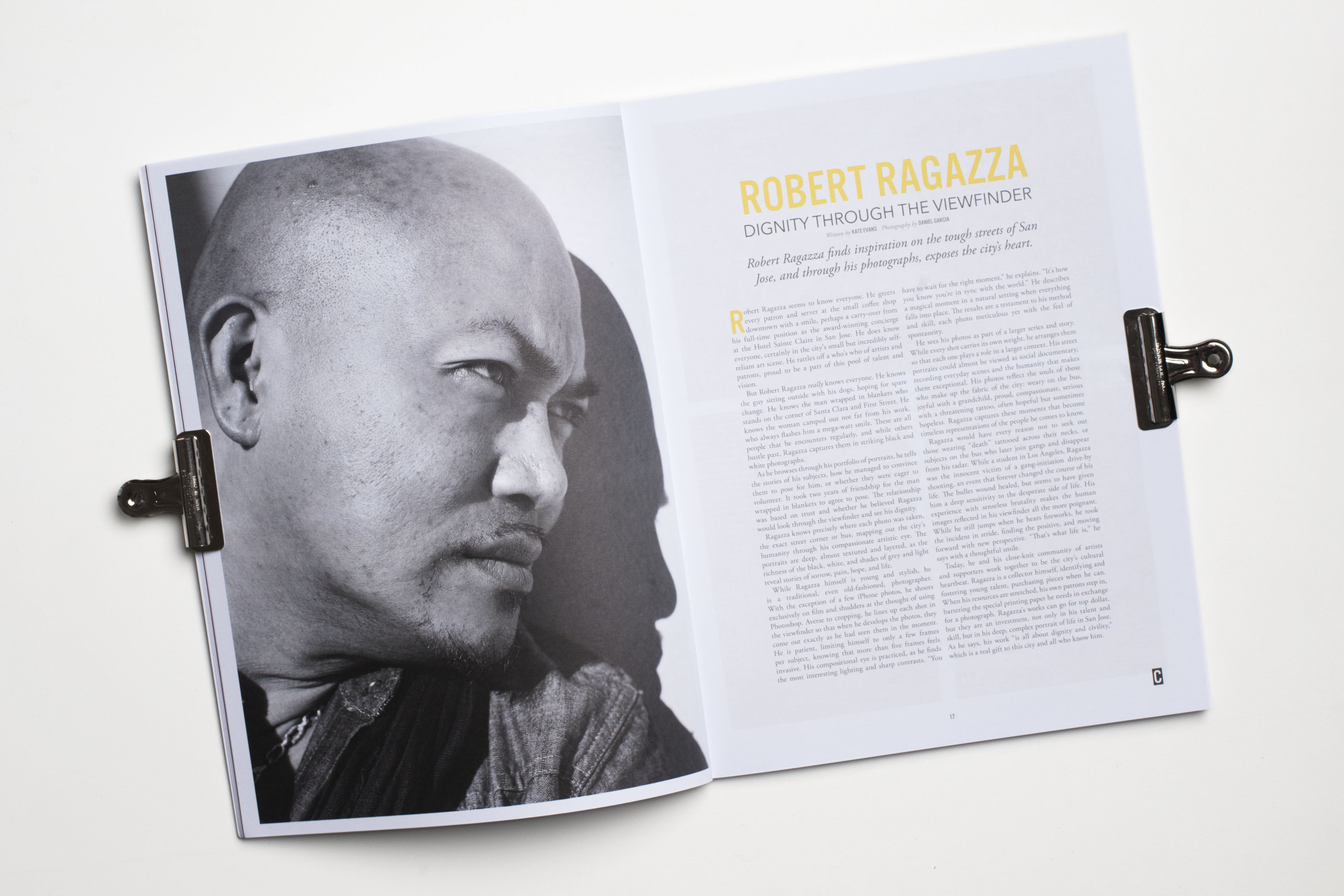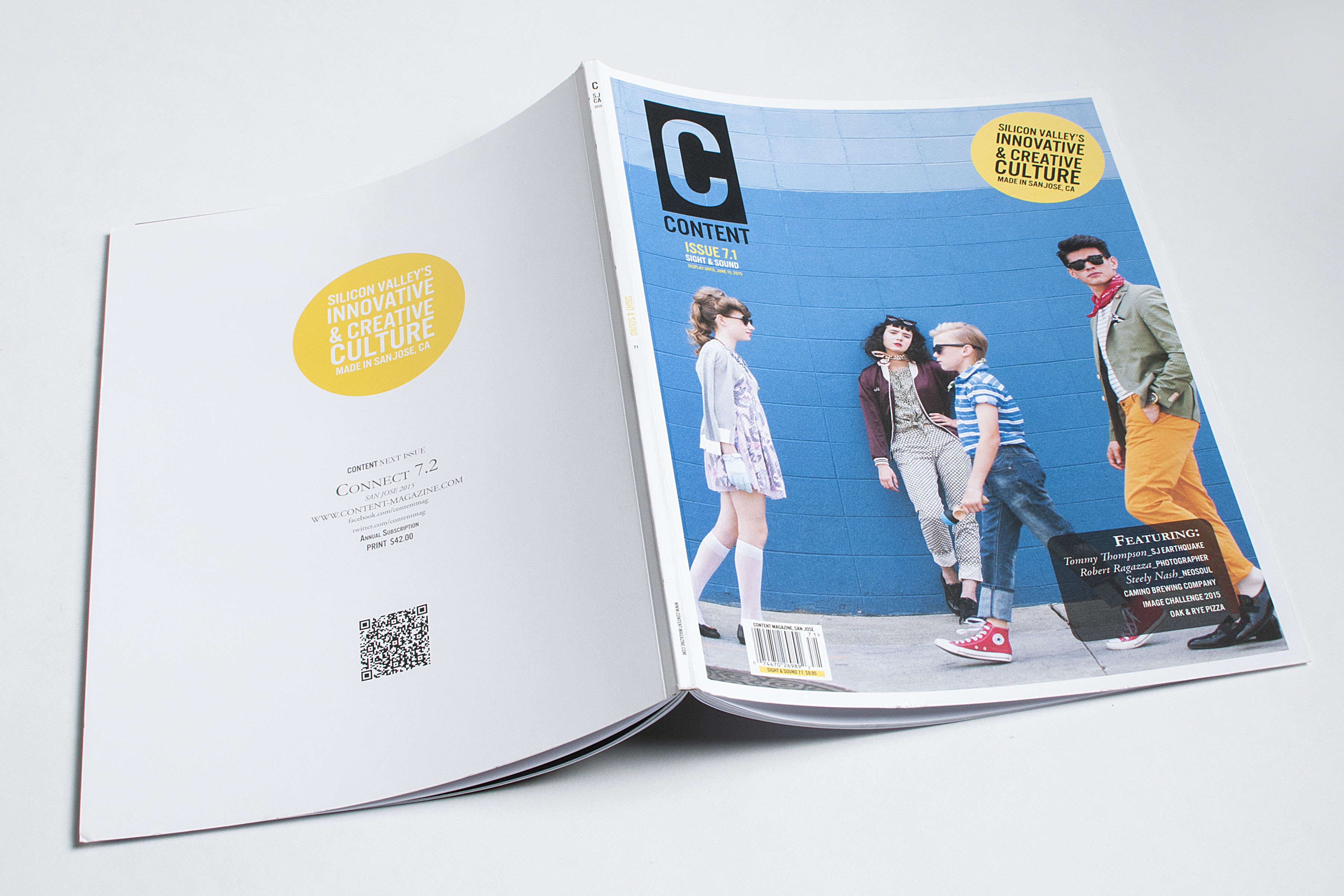
Robert Ragazza seems to know everyone. He greets every patron and server at the small coffee shop downtown with a smile, perhaps a carry-over from his full-time position as the award-winning concierge at the Hotel Sainte Claire in San Jose. He does know everyone, certainly in the city’s small but incredibly self-reliant art scene. He rattles off a who’s who of artists and patrons, proud to be a part of this pool of talent and vision.
But Robert Ragazza really knows everyone. He knows the guy sitting outside with his dogs, hoping for spare change. He knows the man wrapped in blankets who stands on the corner of Santa Clara and First Street. He knows the woman camped out not far from his work, who always flashes him a mega-watt smile. These are all people that he encounters regularly, and while others bustle past, Ragazza captures them in striking black and white photographs.
As he browses through his portfolio of portraits, he tells the stories of his subjects, how he managed to convince them to pose for him, or whether they were eager to volunteer. It took two years of friendship for the man wrapped in blankets to agree to pose. The relationship was based on trust and whether he believed Ragazza would look through the viewfinder and see his dignity.
Ragazza knows precisely where each photo was taken, the exact street corner or bus, mapping out the city’s humanity through his compassionate artistic eye. The portraits are deep, almost textured and layered, as the richness of the black, white, and shades of grey and light reveal stories of sorrow, pain, hope, and life.
While Ragazza himself is young and stylish, he is a traditional, even old-fashioned, photographer. With the exception of a few iPhone photos, he shoots exclusively on film and shudders at the thought of using Photoshop. Averse to cropping, he lines up each shot in the viewfinder so that when he develops the photos, they come out exactly as he had seen them in the moment. He is patient, limiting himself to only a few frames per subject, knowing that more than five frames feels invasive. His compositional eye is practiced, as he finds the most interesting lighting and sharp contrasts. “You have to wait for the right moment,” he explains. “It’s how you know you’re in sync with the world.” He describes a magical moment in a natural setting when everything falls into place. The results are a testament to his method and skill, each photo meticulous yet with the feel of spontaneity.
He sees his photos as part of a larger series and story. While every shot carries its own weight, he arranges them so that each one plays a role in a larger context. His street portraits could almost be viewed as social documentary, recording everyday scenes and the humanity that makes them exceptional. His photos reflect the souls of those who make up the fabric of the city: weary on the bus, joyful with a grandchild, proud, compassionate, serious with a threatening tattoo, often hopeful but sometimes hopeless. Ragazza captures these moments that become timeless representations of the people he comes to know.
Ragazza would have every reason not to seek out those wearing “death” tattooed across their necks, or subjects on the bus who later join gangs and disappear from his radar. While a student in Los Angeles, Ragazza was the innocent victim of a gang-initiation drive-by shooting, an event that forever changed the course of his life. The bullet wound healed, but seems to have given him a deep sensitivity to the desperate side of life. His experience with senseless brutality makes the human images reflected in his viewfinder all the more poignant. While he still jumps when he hears fireworks, he took the incident in stride, finding the positive, and moving forward with new perspective. “That’s what life is,” he says with a thoughtful smile.
Today, he and his close-knit community of artists and supporters work together to be the city’s cultural heartbeat. Ragazza is a collector himself, identifying and fostering young talent, purchasing pieces when he can. When his resources are stretched, his own patrons step in, bartering the special printing paper he needs in exchange for a photograph. Ragazza’s works can go for top dollar, but they are an investment, not only in his talent and skill, but in his deep, complex portrait of life in San Jose. As he says, his work “is all about dignity and civility,” which is a real gift to this city and all who know him.
instagram: thememoirist
Article originally appeared in Issue 7.1 Sight and Sound (Print SOLD OUT)

